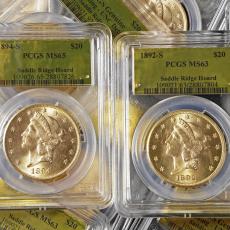Recently, the largest and most valuable coin discovery in U.S. history was discovered by a couple walking their dog in California’s “gold country”. The couple found $10 million in rare gold coins buried in metal cans on their property that had become exposed over the years. . The booty consists of over 1,400 rare and perfectly preserved U.S. gold coins dated from 1847 to 1894. Most of the coins were minted in nearby San Francisco. In $5, $10 and $20 denominations, they add up to a face value of more than $28,000, but their market value is over $10 million.
Not to be left without a windfall, the U.S. tax code actually takes into account these fortuitous findings and treats them as “income” to the finders. In fact, the code uses the precise language of “treasure trove” to define and describe such a circumstance. Trying to argue that it was a “gift” and not income wouldn’t, nor would one be successful in trying to argue that they simply “found” something they had lost–unless it was really theirs to begin with. In addition, arguing that it was part of the purchase price of the land you bought also wouldn’t work because the trove would be considered personal property. In addition, even trying to give the coins away to charity wouldn’t be be efficient tax-wise because for gifts to charity while you are alive there is not a dollar-for-dollar deduction (as the contribution deduction is capped in most cases at 50% of your AGI).
So if you stumble across $10 million in rare gold coins, keep in mind that that will be treated as ordinary income to you for tax purposes. For 2014 the maximum tax rate federally is 39.6%, and California has its own rate of 13.3% . When the rates are combined, after taking into account various adjustments for deductibility of state taxes, the marginal rate is a whopping 51.9%. In the end, walking away with $5 million after-tax isn’t that bad after-all–and I’m sure the couple is confident the tax proceeds will be used efficiently and effectively at both the state and federal level.

